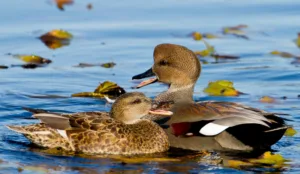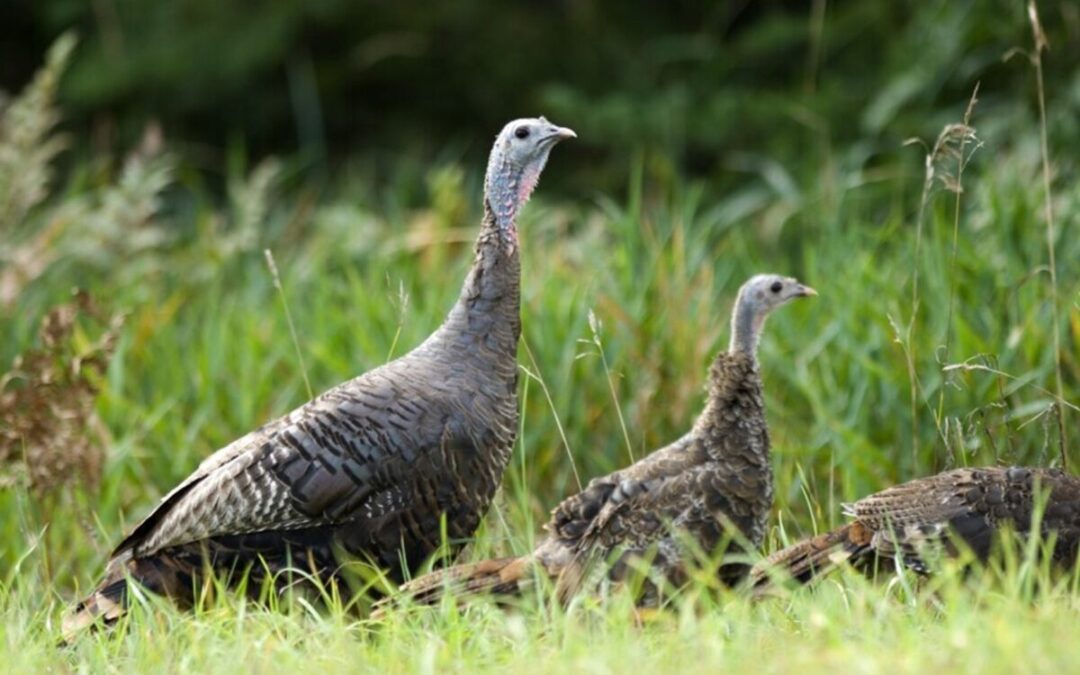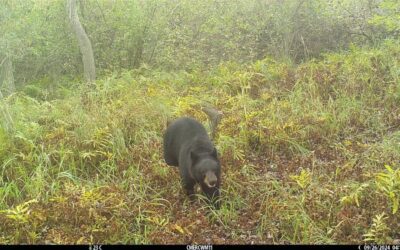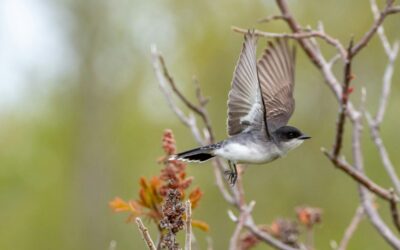
Briton Parker/U.S. Fish & Wildlife Service
Whether you’re a budding bird enthusiast or an ornithologist, here’s how you can tell the difference between each of Michigan’s weird winter ducks.
If you live near a body of water that doesn’t completely freeze over during the winter, you’ve probably seen—or at least heard—a variety of Michigan’s winter waterfowl.
While other birds head south for the winter, these quirky fowl quickly seize the opportunity to feast on the sudden surplus of tasty aquatic plants and pests.
Gadwalls

Mick Thompson/Michigan DNR
Known as a “dabbling duck”, the gadwall forages mainly while swimming. They mostly feed on aquatic plants that they can snatch on the water’s surface. Their nests are usually near the water, on dry land, and are surrounded by dense weeds.
While other ducks may show off patches of color, gadwalls prefer a more subdued look. Gadwalls are intricately patterned with gray, brown, and black feathers that make it easier to blend in with their surroundings.
RELATED: Birdwatching in winter? Yes! Here are 10 favorite places in Michigan
Buffleheads

Grayson Smith/U.S. Fish & Wildlife Service
Named after their odd, puffy, round-shaped “buffalo heads,” the bufflehead can be found swimming in pairs or small groups on lakes, slow-moving rivers, and ponds around Michigan. These small but mighty ducks will dive underwater—sometimes simultaneously—to feast on aquatic insects, mollusks, and plant material.
The ducks usually build nests in holes made by woodpeckers, but they’re happy to call any open tree cavity home.
Redheads

Briton Parker/U.S. Fish & Wildlife Service
While ducks often lay eggs in the nests of others, the redhead takes invading personal space to another level. These ducks will regularly parasitize—or take over—each other’s nests, which can be found in dense marshes. However, they’ll also invade the nests of at least 10 other duck species—including the gadwall. Awkward.
Male redheads can be spotted by their cinnamon-brown colored heads. Redheads like to deep dive into a body of water to eat aquatic plants and insects.
To learn more about these winter waterfowl and other Michigan birds, check out the MI Birds program.
Support Our Cause
Thank you for taking the time to read our work. Before you go, we hope you'll consider supporting our values-driven journalism, which has always strived to make clear what's really at stake for Michiganders and our future.
Since day one, our goal here at The 'Gander has always been to empower people across the state with fact-based news and information. We believe that when people are armed with knowledge about what's happening in their local, state, and federal governments—including who is working on their behalf and who is actively trying to block efforts aimed at improving the daily lives of Michigan families—they will be inspired to become civically engaged.


Michigan residents encouraged to report wild turkey sightings this summer
By Clara Lincolnhol, Capital News Service LANSING – The Department of Natural Resources is asking residents to report the number of wild turkeys...

Former K-9 Maple is busy as a bee sniffing out threats to Michigan State University colonies
EAST LANSING, Mich. (AP) — Researchers at a Michigan State University facility dedicated to protecting honey bees are enlisting a four-legged ally...

Wildlife change – and don’t change – on tiny Lake Huron island, scientists say
By Eric Freedman, Capital News Service LANSING – In nature, a lot can change on a largely uninhabited Great Lakes island over the course of a...

Planting native flowers this summer could bring hummingbirds to your yard
By CLARA LINCOLNHOL, Capital News Service LANSING – Lindsey Kerr with Michigan State University Extension said hummingbirds like trumpet-shaped...

Lost salamanders, forgotten wetlands and the fight for restoration
By Ashley Han & Olivia Watters, Capital News Service LANSING — Every year, Ann Arbor’s Skyline High School students go salamander hunting....





